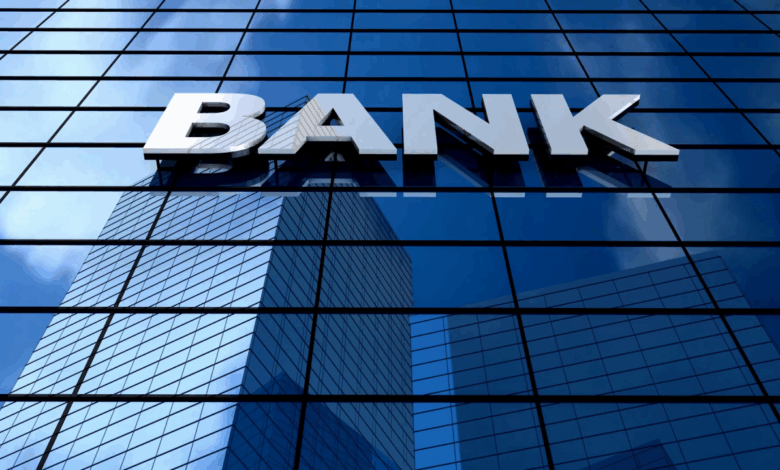Choosing Your Bank: Accounts for Financial Success

The decision of where to entrust your money—which financial institution to partner with and which types of accounts to open—is far more impactful than simply picking the nearest branch or the one with the friendliest teller.
In today’s diverse financial ecosystem, characterized by rapid technological advancement and fierce competition, consumers have an unprecedented array of options, spanning from legacy brick-and-mortar behemoths to nimble, high-yield digital-only platforms.
Making this choice without proper due diligence often results in unnecessarily high fees, frustrating limitations on access, and, most crucially, missed opportunities to grow your savings due to lackluster interest rates.
Your choice of bank is essentially a decision about the infrastructure of your financial life, dictating how easily you can pay bills, how securely you can store your emergency fund, and how efficiently you can transact daily business.
A poorly matched bank can silently erode your wealth through hidden charges and low returns, while a strategically chosen financial partner can actively support your budgeting, saving, and wealth-building goals.
Therefore, approaching this selection process with an informed, critical eye is a fundamental step toward maximizing your financial success and ensuring your hard-earned money is working tirelessly on your behalf.
I. Defining Your Needs: Your Financial DNA

Before evaluating any institution, you must first understand your own banking habits and financial priorities.
A. Assess Your Transaction Frequency
Do you conduct frequent daily transactions, requiring unlimited debit card use and multiple external transfers? Or do you mainly need an account for direct deposit and a few monthly bill payments?
B. Evaluate Cash Handling Needs
Do you frequently deal with physical cash (e.g., from a side job, tips, or rent payments) that necessitates easy, in-person deposits? Or do you operate almost entirely digitally?
C. Determine Your Savings Goals
Are you primarily focused on maximizing returns for long-term savings, or do you need maximum liquidity for an emergency fund? This will dictate the interest rate requirement.
D. Prioritize Customer Service Style
Do you require the reassurance of in-person, face-to-face assistance for complex issues, or are you comfortable with 24/7 support via phone, email, and live chat?
E. Geographic and Travel Requirements
Do you travel frequently, requiring a large national or international ATM network? Or do you mainly transact locally, making a regional credit union feasible?
II. The Contenders: Types of Financial Institutions
The modern banking landscape offers four primary categories of institutions, each with a distinct operating model and set of trade-offs.
A. National Commercial Banks (The Legacy Giants)
These are the large, familiar, for-profit banks with thousands of branches and ATMs across the country.
- A. Pros: Unmatched convenience due to massive ATM and branch networks; full suite of products (mortgages, investment services) under one roof; high-tech mobile apps.
- B. Cons: Historically offer the lowest interest rates (APYs) on savings accounts; often charge numerous maintenance fees unless high minimum balances are met.
B. Credit Unions and Community Banks (The Local Touch)
Credit Unions are non-profit organizations owned by their members, offering a community-focused alternative.
- A. Pros: Generally offer lower fees and slightly higher savings rates than major commercial banks; highly personalized and friendly customer service; better rates on loans (auto and personal).
- B. Cons: Membership is often restricted by location or affiliation; technological platforms can sometimes lag; limited ATM/branch network outside the local area.
C. High-Yield Online Banks (The Digital Maximizers)
These are digital-only, federally insured institutions with no physical branches.
- A. Pros: Consistently offer the highest APYs on savings accounts (often 10-20 times higher than commercial banks); almost entirely fee-free; excellent, modern digital user interfaces.
- B. Cons: No physical branches for in-person service; depositing cash can be cumbersome (often requiring a third-party money order or a secondary local account).
D. Financial Technology (FinTech) Apps
These are non-bank entities that often partner with small banks to offer digital-first, specialized services.
- A. Pros: Highly innovative features (e.g., instant transfers, budgeting tools); often focus on niche markets (e.g., investing, specific rewards).
- B. Cons: Ensure the underlying partner bank is federally insured; services can be less comprehensive than a full-service bank; customer support is entirely digital.
III. Account Type 1: Checking Accounts (The Transaction Hub)

The checking account is the primary liquid account designed for day-to-day transactions and bill payments.
A. The Primary Goal: Accessibility
The main function of a checking account is high liquidity and easy access via debit card, checks, and online transfers. It is the hub for your income and expenses.
B. Prioritize Fee Avoidance
Since checking accounts offer very little to no interest, the primary goal is to avoid all fees. Look for accounts that offer:
- A. No Monthly Service Fee: Look for zero fees, or easily waived fees (e.g., by maintaining a minimum balance or setting up direct deposit).
- B. Free ATM Access: A large, free ATM network or accounts that reimburse ATM fees charged by other banks.
- C. No Overdraft Fees: Choose a bank that allows you to opt-out of overdraft protection, simply declining transactions if funds are insufficient, or offers free overdraft protection transfers.
C. Features for Modern Banking
Look for essential digital features that enhance daily convenience:
- A. Robust Mobile App: Must allow for mobile check deposit, bill pay, and instant transfer setup.
- B. Zelle/Venmo/P2P Integration: Seamless integration with person-to-person payment platforms is increasingly necessary.
- C. Early Direct Deposit: Some banks offer to credit your direct deposit paycheck a day or two early, providing a small cash flow benefit.
D. Interest-Bearing Checking Accounts
Some accounts offer a low interest rate, but these often require a very high minimum balance or come with complex rules. Focus on fee avoidance first, as the interest earned is rarely significant.
IV. Account Type 2: Savings Accounts (The Security Shield)
Savings accounts are designed for storing cash reserves, prioritizing safety and moderate growth over transactional convenience.
A. The Primary Goal: APY and Safety
The main criteria for a savings account are a high Annual Percentage Yield (APY) and federal insurance(FDIC/NCUA). This is where your emergency fund and short-term savings goals should reside.
B. The Advantage of High-Yield Online Banks
For the savings account, the APY is king. High-yield online banks typically provide the best return, ensuring your savings are working as hard as possible to keep pace with or beat inflation.
C. Understanding Transfer Limits
Savings accounts are often subject to federal regulations (Regulation D in the US, or similar rules elsewhere) that limit external transfers or withdrawals to six per month. Going over this limit can result in fees or the bank converting the account to a checking account.
D. Dedicated Goal Accounts (Sinking Funds)
Choose a bank that allows you to open multiple digital savings sub-accounts and label them for specific goals (e.g., “Car Repair Fund,” “Vacation 2026,” “Tax Savings”). This psychological separation is a powerful budgeting tool.
E. Money Market Accounts (MMA)
MMAs are a type of savings account that may offer slightly higher interest, often requires a higher minimum balance, and sometimes allows for limited check writing or debit card use. They are useful for very large cash reserves.
V. Advanced Strategies for Account Optimization
The best financial infrastructure often involves strategically combining multiple accounts from different institutions to leverage the best features of each.
A. The Hybrid Approach (Spreading the Wealth)
Utilize a hybrid banking model to maximize returns and convenience:
- A. Local/Commercial Checking: Use a local bank or major commercial bank for your checking account to handle easy cash deposits, ATM access, and local services.
- B. Online Savings: Use a high-yield online bank for your savings and emergency fund to maximize the APY.
- C. Automated Transfers: Set up automatic, scheduled transfers between the local checking account and the high-yield savings account on payday.
B. Maximize Insurance Coverage
Ensure that the total amount of money you hold in each federally insured institution does not exceed the maximum coverage limit (e.g., $250,000 per depositor, per institution). If you have significant liquid assets, spread them across different banks to maximize safety.
C. The Annual Fee and Rate Audit
Set a date once per year to review all your accounts. Check your average interest rate and compare it against the market leader. Check all fees paid. Be prepared to switch institutions if you find a significantly better, lower-cost option elsewhere.
D. Utilizing Certificates of Deposit (CDs)
For money you know you won’t need for a specific period (e.g., 6 months to 5 years), a CD (Certificate of Deposit) offers a higher, fixed interest rate than a regular savings account. Use a CD ladder—staggering CD maturity dates—to maintain some periodic liquidity.
Conclusion
Choosing the right bank and the best account type requires meticulous attention to fees, interest rates, and personal banking habits.
A national bank offers maximum convenience and services but often provides meager interest returns on savings.
High-yield online banks are the superior choice for growth, maximizing the APY on your emergency and short-term funds.
By strategically combining a convenient checking account with a high-APY savings account, you create an optimal, dual-function infrastructure.
This informed approach ensures that your money is not only secure and accessible but also actively compounding, efficiently supporting all your financial goals.

